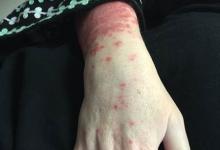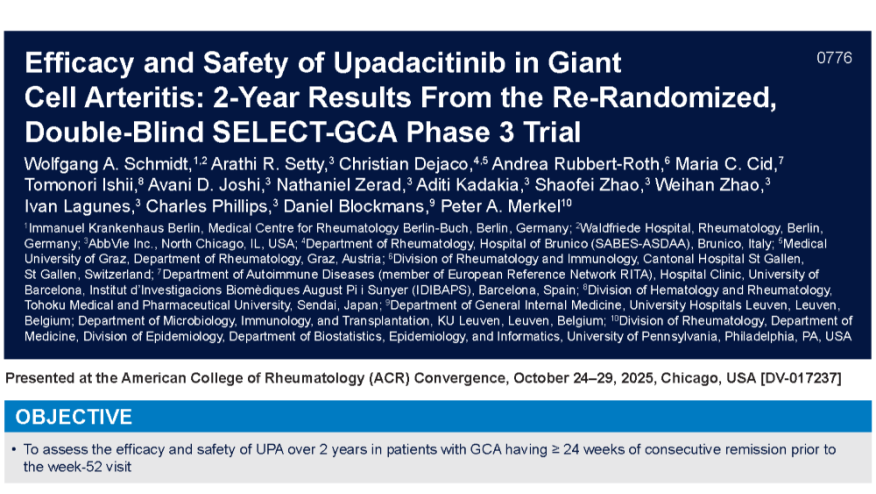Better Zoster Vaccine Options on the Horizon Save
A recent article about a new herpes zoster vaccine should be of great interest to rheumatologists as well as to all clinicians who use immunosuppressive medications (1). The investigators reported results from a phase III study of a vaccine comprised of a key protein from the varicella zoster virus, conjugated to an adjuvant in order to boost immunogenicity.
The vaccine, given intramuscularly twice over 2 months, showed impressive efficacy. Thus, over an average followup just over 3 years, 6 of the 7,698 persons receiving the vaccine developed herpes zoster (0.3/1,000 person-years) compared to 210 of the 7,713 persons receiving placebo vaccination (9.1/1,000 person-years) - that's nearly a 97% reduction.
Tolerability appears to be good, with injection reactions being more common among persons receiving the vaccine. Immunogenicity results (specific cell mediated or antibody responses) were not reported. Of note, vaccine efficacy appeared to be maintained across age cohorts, with comparable levels of protection among persons 50 to 59 years of age compared to older persons. This is relevant as the live-attenuated vaccine currently available for adults (Zostavax) has been shown to have lesser efficacy among older persons.
Rheumatologists and others prescribing immune-modifying medications are often between a rock and a hard place when it comes to herpes zoster. Shingles is not uncommon among patients with autoimmune systemic inflammatory diseases, and almost all experienced clinicians know firsthand how devastating shingles can be to affected patients. So, vaccination would be a useful strategy. However, current guidelines call for withholding the use of many effective medications, including biologic agents, before, during and after vaccination.
When faced with a patient with active disease, the clinician must choose: adhere to a ‘treat to target’ strategy and commence highly effective therapy immediately, or delay therapy while arranging for herpes zoster vaccination. Neither choice is ideal. Hopefully, if this conjugate vaccine becomes available, doctors can work towards both goals concomitantly.
There is still data that rheumatologists would be eager to learn about the new vaccine. How effective is it specifically among patients with immune diseases? What impact might the various types of medications patients may be taking, alone and in combination, have upon the efficacy of the vaccine? What will the new vaccine cost? The last issue is relevant, as the costs to the patient of the current vaccine have impacted its utilization. Nevertheless, this is an important topic and further developments are eagerly awaited.











If you are a health practitioner, you may Login/Register to comment.
Due to the nature of these comment forums, only health practitioners are allowed to comment at this time.